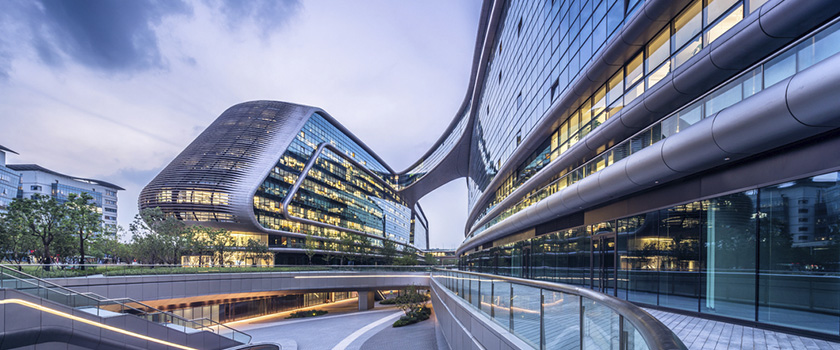The Chinese economy is facing headwinds leading into 2022, including: 1) Ongoing regulatory crackdown; 2) Exposure to COVID outbreaks; 3) A slump in the housing sector; and 4) Power shortages over the winter months.
- As a result and following from a sharper-than-expected slowdown in Q3-21, we have decided to revise our GDP growth forecast for 2022 to 5.0% from 5.5% previously. This points to muted growth in the next quarters.
- Despite these pressures, an aggressive monetary easing cycle is not upon us. The PBOC will likely stick with its current “cross-cyclical adjustment” stance, before reintroducing moderate counter-cyclical measures in Q2-22.
- While investors may see some cyclical reprieve in 2022, we favour a more cautious approach.
Multiple growth headwinds in 2022
China’s economy continued to slow in Q3-21, as expected. GDP growth weakened to 4.9% y/y, down from 7.9% in Q2-21 and missing expectations of a 5.0% expansion (Chart 1). In sequential terms, the economy slowed to 0.2% SA q/q, down from 1.3% in Q2-21. The factors that underpinned sequential activity – sustained external demand and a stabilisation on the labour front – will prove insufficient to offset piling headwinds:
1. Ongoing regulatory crackdown: Since November 2020, regulators have proactively deployed a wide array of policy tools to address structural shortcomings in the Chinese economy, including the role of large technology platforms, concerns about income inequality, elevated levels of corporate debt and the ostensible fraying of China’s social fabric. These are the result of many years of rapid GDP expansion. Faced with these challenges, President Xi Jinping has heralded a new era of “Common Prosperity”. Under this new paradigm, the overarching objective will be to attain high income status by 2025. This ambition requires that per capita Gross National Income (GNI) levels increase substantially from USD 10,610 in 2020. The World Bank defines “highincome” economies as those with per capita GNI levels exceeding USD 12,696 in 2020. To achieve this, China will seek to realign its factors of production towards labour via redistributive measures and through mobilising the private sector. Although this is a multidecade plan, the regulators have front-loaded reforms to 2021 owing to a “window of opportunity” on the growth and political fronts. A favourable base effect in Q1-21 entails a higher threshold for economic adjustment this year, as it will be difficult not to meet the 6.0% target set at the National People’s Congress (NPC) in March 2021. Moreover, the authorities are gearing up to an unprecedented power reshuffle. This will be revealed during the Congress held in Q3-22, but more cues should be available by March next year. All except two Politburo members are expected to step down in 2022, paving the way for Xi Jinping to put together a new cabinet to move this agenda forward.
2. COVID outbreaks: China maintains a “zero tolerance” policy towards COVID cases, making its economy vulnerable to localised outbreaks, as this requires lockdown measures of varying stringency. In fact, the latest scare involved a retired couple that travelled extensively around Inner Mongolia in October, before identifying that they had been infected with the virus.
The outbreak has already extended to multiple large cities, prompting the authorities to caution that COVID cases will increase over the winter period. On Halloween, almost 35,000 people were locked inside Disneyland Shanghai for 24 hours as the authorities conducted mass testing and contact tracing. We don’t expect that these policies will be relaxed until after the NPC. However, much of this depends on what happens after China hosts the Winter Olympics in February 2022.
3. Housing sector slump: Pressures surrounding Evergrande have spilled over to the broader housing sector. As a result, several smaller developers did not meet payment obligations on time in October, prompting the People’s Bank of China (PBOC) to refute fears of systemic risks. On October 17, PBOC Governor Yi Gang addressed investor concerns openly for the first time, stating that Evergrande would not result in a systematic shock to the financial system. They also stressed that financial institutions were adequately capitalised to withstand a housing sector slump and urged banks to extend loans and avoid overreacting to the “three red line” policy (see our September 2021 report). That means that we shall see additional pressures to the sector going forward. Home prices declined to 3.3% y/y in September, but we expect that these will decline further. Figures were less rosy on the investment front, with building starts declining to -4.5% y/y and we expect that real estate investment will be negative in 2022.
4. Brewing energy crisis: A global energy crisis will compound to growth headwinds, exacerbating power shortages as we near the winter months. Energy prices have soared since June 2021 (Chart 2). This is the result of global supply-chain disruptions as well as idiosyncratic political factors. Coal accounts for approximately 60% of China’s primary energy consumption. The current factory coal price is around CNY 1500 per tonne. In contrast, power generators break even around CNY 1,000 per tonne, making it cheaper to shut operations rather than generate power at a loss. Going forward, we expect that the authorities will relax some of the supply constraints to reduce upside pressures on prices. This includes importing more thermal coal, allowing coal rich provinces such as Inner Mongolia to increase capacity output above the approved limits, and allowing upstream electricity prices to increase above the 10% that has already been implemented. These measures will alleviate pressures but will not offset risks altogether, especially in case of abnormally cold temperatures during winter. As a result, we expect that the economy will weaken further to around 4.0% y/y in Q4-21 and 3.5% y/y in Q1-22. In the absence of more resolute policy support, this will likely result in weaker overall growth in 2022. We have therefore decided to lower our 2022 GDP growth forecast to 5.0%, from 5.5% previously.
An aggressive monetary easing cycle is not upon us
Despite injecting a net amount of CNY 597 billion via Open Market Operations (OMOs) in September, PBOC intervention slowed to CNY 160 billion in October. M2 growth increased slightly to 8.3% y/y is September, up from 8.2% in August, and broadly in line with nominal GDP growth, which was the objective for 2021. M2 growth will remain broadly stable from here onwards. On the contrary, outstanding aggregate financing declined to 10.0% y/y in September vs 10.3% in August and we expect that this will continue to trend down in the coming months.
As a result, our proprietary China Financial Conditions Index (Chart 3) sustained a slight tightening bias in October. On October 15, PBOC Governor Yi Gang also stated that the bank would not deviate from the current “cross-cyclical adjustment” stance (跨周期调节). We interpret this as a transition phase between neutral and counter-cyclical support. Under this scenario, PBOC will continue to stabilise liquidity via OMOs, rolling over of maturing policy loans and the re-lending tool. An additional Reserve Requirement Ratio (RRR) cut is still possible in December, to offset maturing Medium-term Lending Facility (MLF) loans, however this will remain data dependent.
Nevertheless, there will be more pressure to ease going forward. PBOC has already started to implement marginal easing via macroprudential channels to avoid exacerbating risks to the housing sector. In addition, we expect that they will reintroduce counter-cyclical measures to smoothen fluctuations in the business cycle and offset any exogenous shocks, starting in Q2-22. The priority will be increasing fiscal spending on new infrastructure, earmarking more funds for innovation and boosting support to SMEs. The change in stance will be facilitated by weaker activity in Q1- 22 and cooling inflation. The Consumer Price Index (CPI) remains very low, reaching 0.7% y/y in September owing to negative pork prices. However, the Producer Price Index (PPI) reached a record high of 10.7% y/y due to rising energy prices.
Implications for investors
While investors may see some cyclical reprieve in 2022, following tightening in 2021, China will continue to walk a fine line between growth and reforms. With 4.5-5.0% growth per annum needed to achieve high income status, investors should expect that GDP will slow once again to 5.0% in 2022 and gradually trend towards 4.0% by 2025. In sum, a structural shift lies ahead for China associated with new regulation and lower growth.
On the equity front, we have seen a contraction in multiples since March 2021 (Chart 4). However, the valuations for the broader equity market remain above their 10-year average. This means we can’t exclude the possibility of further correction before counter-cyclical support arises in 2022. However, strategic opportunities will start to emerge for agile investors, particularly in the tech sector, where the correction has been more pronounced. From a tactical standpoint, China’s closed capital account and housing sector slump implies upside risks to equities. Real estate accounts for approximately 60% of total household wealth in China. The housing sector slump will therefore cause domestic investors to focus on equities and away from real estate. We continue to prefer onshore equity markets over those offshore. Long-term investors can also benefit from exposure to those sectors and themes that will be of strategic importance under the new paradigm of “Common Prosperity”. That includes core technology and companies with a focus on domestic consumption, a view which we have maintained since the announcement of the 14th Five- Year Plan in March 2021.
Lastly, fixed Income investors should remain cautious as the housing sector, which accounts for roughly 70% of the Chinese high-yield USD bond market, will remain under pressure. In addition to the factors mentioned above, the sector faces a record amount of bonds maturing in Q4-21 and 2022.









